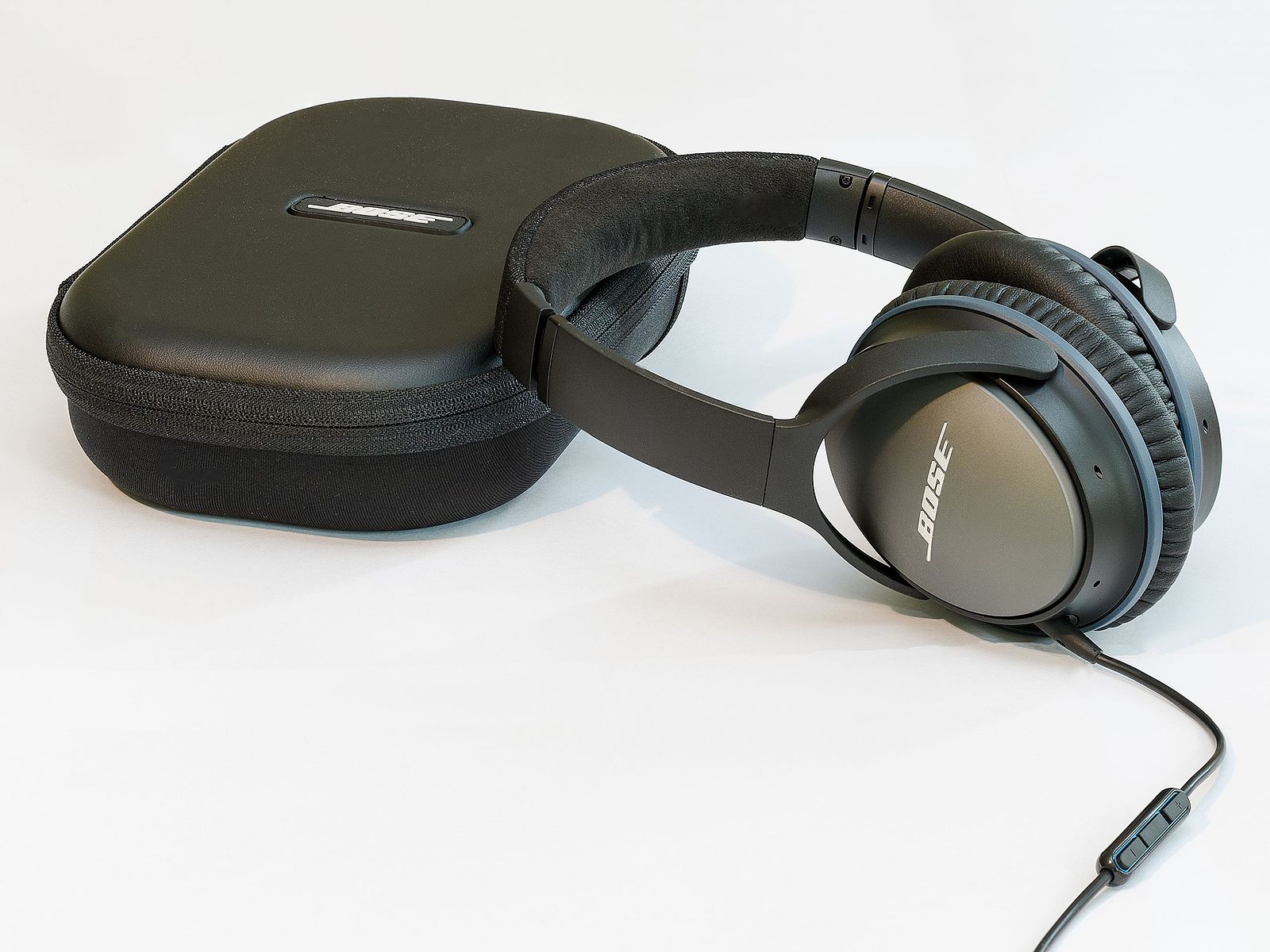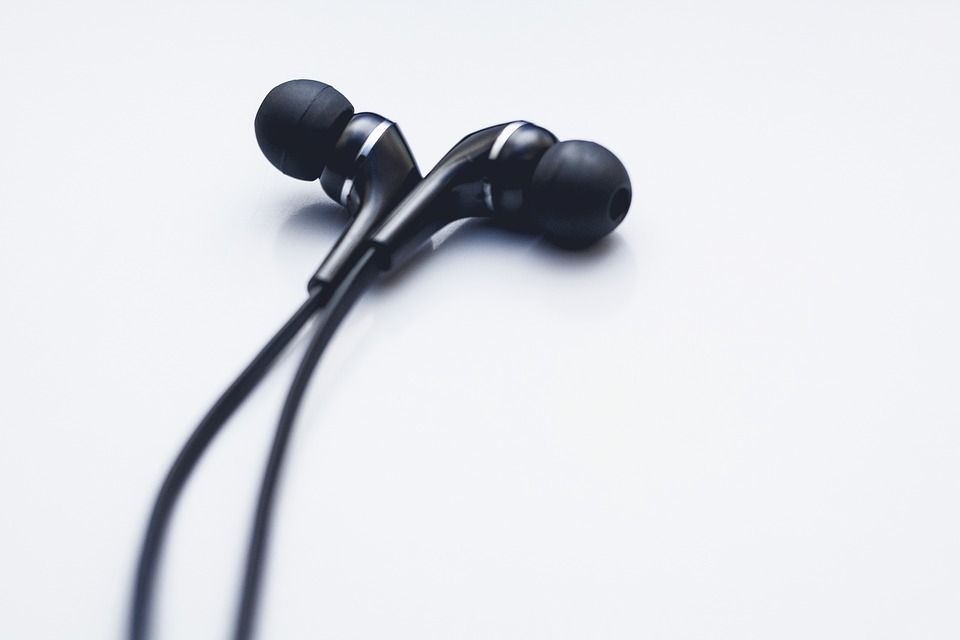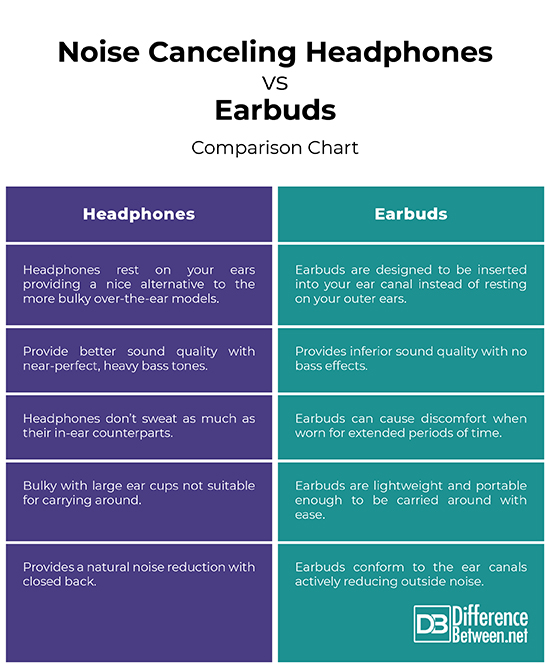Difference Between Noise Canceling Headphones and Earbuds
The good old monster-sized headphones are the things of the past now. Headphones have been wrapped around our ears for centuries and back in the days, they were all the rage. Headphones emerged back in the 1970s but quickly became a status symbol among music aficionados. They have become more than just a mere listening device; they are a portable loudspeaker wrapped around your ears. In fact, if you’re reading this article, there’s an excellent chance you’re wearing one yourself. Headphones deliver loud sound directly into the ear. But then the more portable and handy earbuds came to the picture and suddenly, earbuds became the center of attraction.
As the use of portable media players increased, so did the use of earbuds. The world has moved from the extremely loud headphones to the small and portable earbuds. Earbuds have changed the way we listen to music. Over the years, earbuds have become ubiquitous and gained society acceptance. And they have evolved into today’s smart wearables. To top it off, we have wireless earphones now which provide complete freedom from the ubiquitous cables to offer you the best listening experience without the wires. So should you prefer those large bulky headphones or go for the small, portable earbuds? Or which one’s best suited for your listening needs or which best conforms to your favorite tunes?
What is Noise Canceling Headphones?
Headphones are more than just entertainment conduits for the music aficionados, the active noise cancelling headphones provide complete isolation from your immediate surroundings, blocking the ambient noise that interferes with your privacy. It’s a form of passive noise reduction, which blocks at least some portion of the ear canal while actively blocking outside noise. They are perfectly designed for prolonged use without hurting the ears, thanks to the noise-reduction circuitry built into the ear cups, which make the ear cups slightly bulkier than the standard headphones without active noise-cancellation technology. The idea is to provide a quiet and private sound in the ears of the listener. Today, there are many different types of headphones available with different audio reproduction abilities, ranging from heavy bass-pumping headphones to lightweight earbuds.
What is Noise Canceling Earbuds?
Earbuds are the more portable versions of full-sized headphones, except they are specifically designed to be inserted into your ear canal instead of resting on your outer ears. Earbuds are flexible, lightweight, and portable enough to be carried around with ease. This is why you probably see people running around with the wires hanging out of their ears in cafes, running tracks, or during workout or even at work. As noise-cancelling headphones are most popular with frequent flyers, comfort is a must and this is where noise-cancelling earbuds take a dive. There are three main elements in a pair of noise-cancelling earphones – the main speaker driver that plays the music; a microphone or a set of microphones that pick up ambient noise; and finally, there’s this noise-cancellation circuitry which analyzes the incoming sound waves.
Difference between Noise Canceling Headphones and Earbuds
-
Design of Noise Canceling Headphones and Earbuds
– On-ear headphones, also called supra-aural headphones, as the name suggests, rest on your ears providing a nice alternative to the more bulky over-the-ear models. The design provides for prolonged use as well as good degree of passive isolation. The ear cups are so designed to conform to your ears. Earbuds, on the other hand, specifically designed to be inserted into your ear canal instead of resting on your outer ears. They are small listening devices designed to lock inside the ears.
-
Portability
– Over-the-ear or around-ear headphones are like small loudspeakers worn on or around the head with big ear cups snuggling around your ears, which make them slightly fatigue for extended listening. They are bulky, but with high-fidelity sound and active noise cancellation for ambient noise reduction, but they aren’t as portable as their portable counterparts. Earbuds, on the other hand, are insanely portable with small drivers and not-so-large enclosures. Earbuds are the preferred choice among frequent flyers.
-
Comfort
– Around-ear headphones relatively score higher on the comfort index because they are capable of producing amazing output without hurting your ears for prolonged listening. Plus headphones don’t sweat as much as their in-ear counterparts, so that they can be worn for extended periods of time without. Earbuds, on the other hand, conform directly to your ear canals which can cause serious discomfort for those with sensitive ears. So, earbuds cannot be worn for extended time.
-
Sound
– Headphones come with different audio reproduction abilities and they range from lightweight in-ear earbuds to heavy bass-pumping on-ear headphones, both of which are capable of producing amazing output. Both are noise-reducing devices with strong noise blocking capabilities, but noise-cancelling headphones are better at blocking ambient noise, offering superior sound quality with heavy bass than the earbuds. In-ear headphones, even with effective noise cancellation, deliver inferior sound quality, especially when it comes to bass effects.
Noise Canceling Headphones vs. Earbuds: Comparison Chart
Summary of Noise Canceling Headphones vs. Earbuds
Although, this article does not exactly tell you which headphone to buy, it puts some light on what qualities of on-ear headphones make them so different from their in-ear counterparts. That being said, earbuds are the more portable versions of full-sized headphones, except they are specifically designed to be inserted into your ear canal instead of resting on your outer ears. However, it touches the ear canal, which can damage your ears when worn for extended periods of time. Headphones provide superior sound quality with richer bass tones for an exceptional listening experience for prolonged hours without hurting your ears.
- Difference Between Caucus and Primary - June 18, 2024
- Difference Between PPO and POS - May 30, 2024
- Difference Between RFID and NFC - May 28, 2024
Search DifferenceBetween.net :
Leave a Response
References :
[0]Image credit: https://cdn.pixabay.com/photo/2017/08/07/10/21/earphones-2602313_960_720.jpg
[1]Image credit: https://commons.wikimedia.org/wiki/File:Bose_QuietComfort_25_Acoustic_Noise_Cancelling_Headphones_with_Carry_Case.jpg
[2]Melanie Radzicki McManus "Earbuds vs. Headphones." HowStuffWorks.com, 21 June 2012, https://electronics.howstuffworks.com/gadgets/audio-music/earbuds-vs-headphones.htm 29 January 2019.
[3]Smith, Caspar. “Now hear this: the history of headphones.” 13 September 2017, The Guardian, https://www.theguardian.com/business/2011/oct/30/history-of-headphones 29 January 2019.



